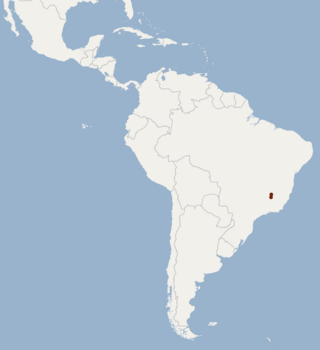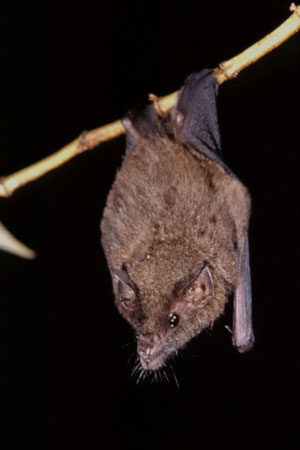
The New World leaf-nosed bats (Phyllostomidae) are found from southern North America to South America, specifically from the Southwest United States to northern Argentina. They are ecologically the most varied and diverse family within the order Chiroptera. Most species are insectivorous, but the phyllostomid bats include within their number true predatory species and frugivores. For example, the spectral bat, the largest bat in the Americas, eats vertebrate prey, including small, dove-sized birds. Members of this family have evolved to use food groups such as fruit, nectar, pollen, insects, frogs, other bats, and small vertebrates, and in the case of the vampire bats, even blood.

Bokermann's nectar bat is a bat species from South America. It is endemic to Brazil. It feeds on nectar, and is listed as an endangered species.

Dekeyser's nectar bat is a bat species found in Brazil and Bolivia.

Thomas's nectar bat is a bat species from South and Central America. Thomas's nectar bat pollinates the vine Marcgravia.

Lonchophylla is a genus of bats in the family Phyllostomidae.

The long-snouted bat is a species of bat in the family Phyllostomidae. It is the only species within the genus Platalina. It is endemic to northern Peru and northern Chile. It feeds almost exclusively on the nectar and fruit of the columnar cactus. The species is rare, but has a wide distribution with at least 25 populations, and is listed as near-threatened due to habitat loss causing the removal of their primary food source.

Glossophaginae is a subfamily of leaf-nosed bats.
Hsunycteris is a genus of bats in the family Phyllostomidae and the only genus in the tribe Hsunycterini.
Cadena's long-tongued bat is a bat species from Colombia and Ecuador. It was originally described in the genus Lonchophylla, but was moved to Hsunycteris when the latter was erected in 2014.
Patton's long-tongued bat is a bat species from Bolivia, Colombia, Ecuador, and Peru. It was originally described in the genus Lonchophylla, but was moved to Hsunycteris when the latter was erected in 2014.
Dashe's nectar bat is a bat species from Bolivia, Colombia, Ecuador, and Peru. It was cited as a member of the genus Hsunycteris before it was formally described.







